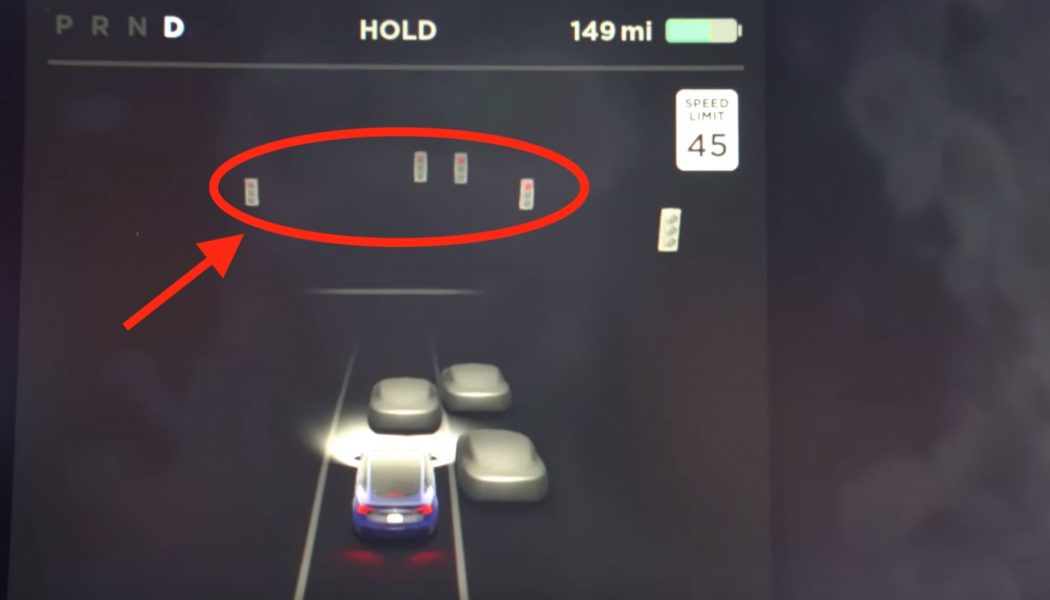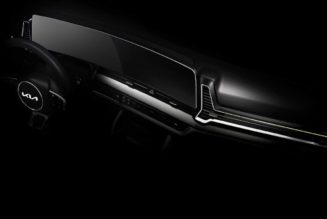Tesla’s Autopilot, as well as other driver-assist tech from competing automakers, tends to divide the automotive-minded. Folks either view it as a feature that lulls drivers into a false sense of security or as the best thing since the dawn of the car. We, however, feel there’s a middle-ground that both acknowledges some drivers’ overreliance on such technologies while also acknowledging these features make the act of driving on freeways, and other boring stretches of road, a lot more palatable.
That’s why we welcome and also note the potential shortcomings of Tesla’s latest update to Autopilot’s beta- phase Traffic Light and Stop Sign Control feature in its v10.2 (2020.24.6.9) software update. As of now, Teslas running this software “no longer [require] explicit driver confirmation of pushing down the gear selector to continue through an intersection for green traffic lights when there is a lead vehicle ahead of you and Autopilot is confident that you are not in a turn-only lane. “
Traffic Light and Stop Sign Control
Here’s how Autopilot’s Traffic Light and Stop Sign Control feature works: First introduced a few months ago, it uses the car’s cameras and in-dash navigation system (including map data) to determine if a traffic light or stop sign lies ahead and brings the vehicle to a halt if it detects such an obstacle—no matter the state of the traffic signal. Drivers, however, can override Autopilot from stopping the car for a green light by tapping on the gear selector.
Now, Teslas with Traffic Light and Stop Sign Control running the latest software update will continue through a green light without any additional input from the driver provided Autopilot’s on, the vehicle is not in a turn lane, and the car ahead does not come to a stop. It’s a decidedly convenient enhancement that arguably makes Tesla’s driver-assist tech even better.
That said, the feature also runs the risk of Tesla drivers becoming overly reliant on its capabilities. For Tesla’s part, it does remind drivers to “continue to pay attention and be ready to take immediate action, including braking because this feature may not stop for all traffic controls.” In short, responsible drivers ready to take over control of the vehicle at a moment’s notice will surely appreciate this latest development to Tesla’s Traffic Light and Stop Sign Control function. Drivers who lean too hard on the tech to do the driving, however, may ignore outside factors—such as a car speeding through a red light in a four-way intersection; something a fully engaged driver might notice and subsequently take the actions necessary to avoid a collision—as their Tesla follows the lead car through a green light.
What Other Changes Come With Tesla’s v10.2 (2020.24.6.9) Software Update?
Alongside the upgrades to Autopilot’s Traffic Light and Stop Sign Control, Tesla’s v10.2 (2020.24.6.9) software update also brings new features to so-equipped model’s cameras. Notably, the car now allows owners to augment the backup camera feed with those of the rear-facing side cameras to get an even broader view of what’s behind the electric vehicle.
Similarly, the car’s Sentry Mode, which uses the exterior cameras to record external threats (such as a potential break-in) while parked, now includes a red dot in its displayed recordings to “indicate the moment when a Sentry Mode event was triggered.” Meanwhile, users can also choose to use the cabin camera to “automatically capture images and a short video clip just prior to a collision or safety event to help engineers develop safety features and enhancements in the future. ”
The remaining changes associated with the v10.2 (2020.24.6.9) software update include small improvements to the audio system’s functionality and the walkaway door lock feature (owners now can program the car to remain unlocked when at home even if the driver walks away).










